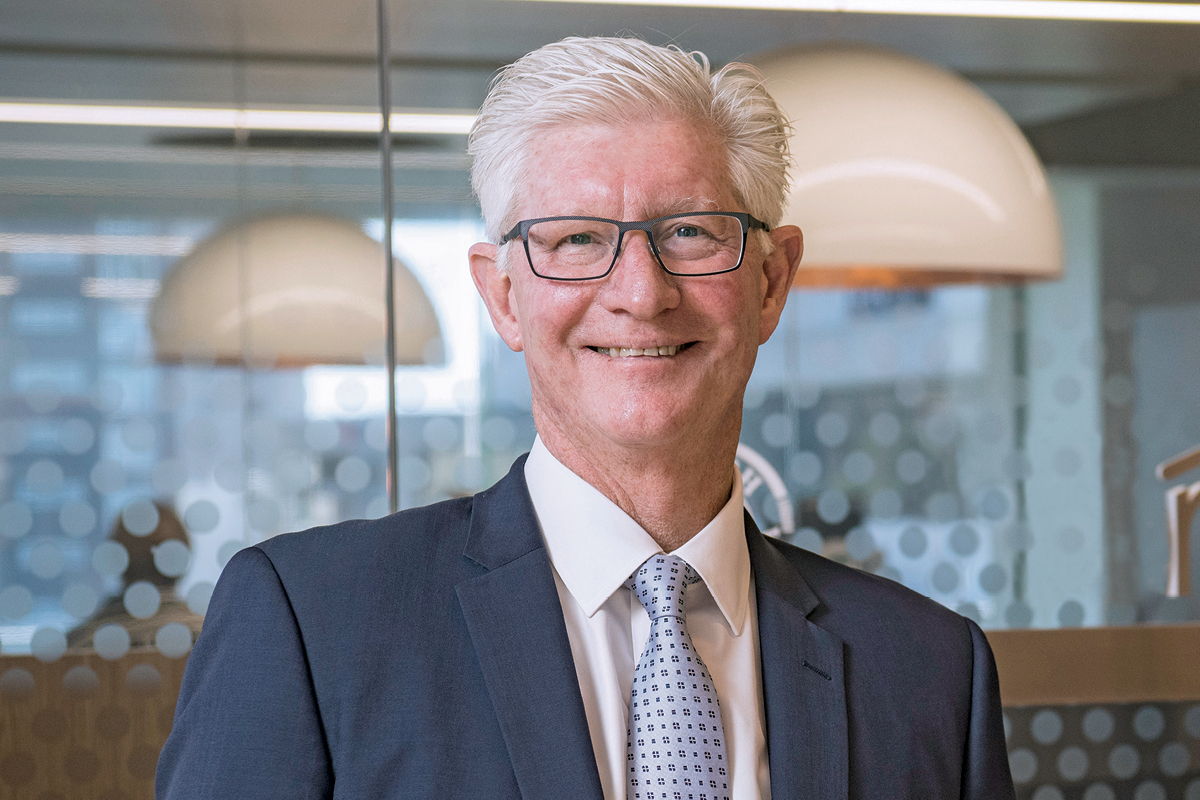He may share a name with the famous comedian, but HomeStart Finance CEO John Oliver doesn’t get mistaken for him. “When you do a search of John Oliver, he comes up way before me,” John says, amused.

He recalls an article he once read about the comedian’s return to television. “I thought, ‘Oh, there I am. I forgot I’m famous!’”
John has always been fascinated by finance, particularly the way in which financial organisations help their customers. A Novocastrian by birth, he moved to Sydney with his wife to pursue his financial career while working for the Commonwealth Bank.
Then, after nearly 25 years with the company and a family move to Adelaide, he joined Adelaide Bank (now Bendigo Bank).
When a CEO opportunity presented itself at HomeStart, John jumped at it. “It was an opportunity to see if I had the wherewithal to run my own ship,” he says.
“It was a bit like, ‘You never know if you never, ever go.’ I have a simpler view of that: ‘It’s better to try and fail than never try.’”
John describes HomeStart as a financial institution with a social conscience. “Our reason for being is to make home ownership a reality for more people in more ways,” he explains. “HomeStart isn’t here to compete with banks, we’re here to complement them.”
“Our reason for being is to make home ownership a reality for more people in more ways.”
HomeStart is based in Adelaide and run by the South Australian Government. It was founded in 1989, around the time when interest rates in Australia were up to 18% and housing affordability was very challenged, according to John, “That is basically why HomeStart was created; to help people into home ownership through lower upfront costs and reduced fees and charges,” he says.
John adds that HomeStart operates under the National Consumer Credit Protection Act, and the credit standards it applies are similar to banks.
“We conform to Australian Securities and Investments Commission regulations, taking a responsible approach to lending, and while we are not a deposit-taking institution, we comply with the Australian Prudential Regulation Authority regulatory guidelines. However, as a government-backed organisation, we have a little bit of freedom to offer home loans in situations where the banks do not.”
A high proportion of HomeStart’s customers were first unable to get their finance from a bank. “That could be because they’ve got a much lower deposit, which is predominantly the case,” John says. “It could be because the banks see them as being a little bit outside their credit risk appetite. Or it might be that the banks don’t take into account some of the income that they get.”
These factors, however, don’t mean the individuals are not creditworthy. For John, it’s quite the contrary. “The expression I use quite often is, ‘They need a hand up, rather than a hand out’. We’re just helping good, creditworthy people get into home ownership.”

HomeStart has helped more than 71,000 people over the past 30 years, and it has gained a lot of popularity; particularly among migrants. “They put a lot of faith in the fact that the government has got a financial institution that they can trust,” John observes.
“We have supported migrants from many backgrounds, including helping 300 Bhutanese families enter home ownership, as just one example.”
First homebuyers account for approximately 60% of the company’s market. Around 30% are ‘fresh starters’, including those who have come out of a divorce.
“We call it the fresh start because a lot of people in that space come out of that relationship breakdown,” John says. “Some have lots of equity, but maybe they’ve only ever been at home. Some women in these cases have only ever worked casually or part-time. Others have possibly found that they’re left with very few assets, but they’ve got a job and therefore they’ve got cash flow.”
The remaining 10% goes to the reverse mortgage market. “These are Australians who need to access some equity in their house to do a variety of things; whether that’s lifestyle or home renovation,” John notes.
John doesn’t expect HomeStart’s customers to stay with the company forever. “We’re a transitionary lender,” he explains.
The best piece of financial advice John Oliver has ever received is: Have a budget, and live within your means. “It’s very easy to not live within your means and society these days facilitates that. We’re living in a world where instant gratification is something that people are looking forward to. If you go back many years, the rule that our parents had was, ‘If you haven’t got the money in your wallet, well you can’t buy it.’”
“You come to HomeStart when you can’t get your money from a bank. You stay with us for a few years – that could be somewhere between five and seven years – and at the end of that period, you’ve got more equity in your house. The cost of moving to a mainstream bank is then considerably less and you become a very good client for them. That’s how we like to see people move.”
He further explains the company’s operation using the analogy of a car bogged in the sand. “You put your accelerator down and the wheels spin faster and faster. You suck in a lot of sand, but a lot of sand goes out the back. That’s basically the way we look at it from a customer’s point of view. You’re only with us for a certain period because you get to a point where you can be financed by a bank. There are other people out there who are looking for housing finance so we’re kind of spinning our wheels.”
The analogy links to John’s favourite mantra: “To strive, to seek, to find, and not to yield.” It is the last line of Alfred Tennyson’s poem, ‘Ulysses’.
There is only one other Australian organisation, in Western Australia, that provides similar services to HomeStart. While John believes there is potential to replicate the HomeStart model in other states and territories, he says it is unlikely. “It comes down to the government. I think governments have become reticent to want to own financial institutions,” he says.
Nonetheless, John sees a bright future ahead for the company. “My vision for HomeStart is to keep looking after our customers and helping them achieve that dream of home ownership.”
Proudly supported by:



